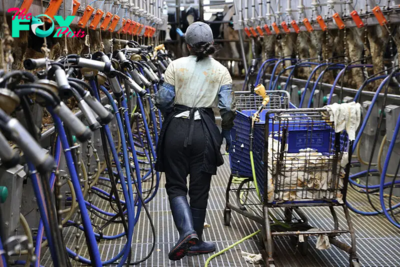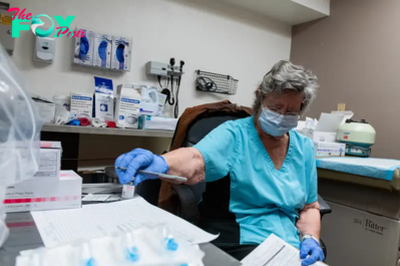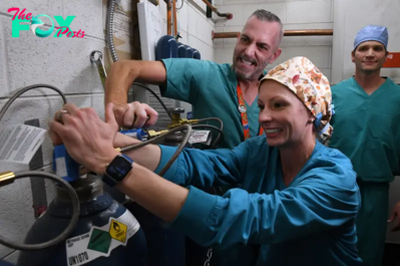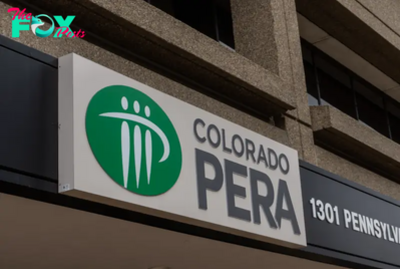Health
Rising spending. Falling enrollment. Nervous health providers. Why Colorado’s Medicaid program has the Capitol on edge.

The worst could be yet to come for Colorado’s troubled Medicaid program, as public agencies, health care providers and low-income patients all struggle to find their way back to something resembling the pre-pandemic normal.
At last week’s Joint Budget Committee meeting, state lawmakers learned that the Department of Health Care Policy and Financing, or HCPF, overspent last year’s budget by as much as $154 million, the result of an aging population that has simply needed more care than expected.
But lawmakers say Health care providers across the state are facing a very different problem. Far from benefiting from the rise in state spending, they’re seeing a surge in uncompensated care that’s straining the state’s medical safety net just as federal pandemic aid dollars run out.
“We have to find ways — financially creative or otherwise — to make sure that we are not closing clinics and losing infrastructure that we had built prior to the pandemic,” state Rep. Kyle Brown, a Democrat from Louisville, said at the meeting. “And that strikes me as where we are at.
“I’m talking about an implosion of the safety net,” he added.
The wind-down of the federal government’s expansion of Medicaid during the public health emergency was always expected to pose a challenge for medical providers, some of whom staffed up when public money was flowing more freely.
☀️ READ MORE
JD Vance, Donald Trump’s running mate, is scheduled to visit Colorado in October
Doug Lamborn, like many members of Congress, traveled the world with his spouse on the dime of private groups
Colorado policymakers asked PERA what it would take to bolster its odds of full funding. The answer: $13 billion.
But now there are signs that the transition from the federal health emergency may leave some medical practices worse off than they were in 2019.
During the pandemic, the uninsured rate fell to 4.6% in Colorado from the 6.5% who lacked Health insurance before March 2020, according to the Colorado Health Access Survey.
State health officials don’t know how many Coloradans are uninsured today. But HCPF Executive Director Kim Bimestefer told the JBC that her department believes the uninsured rate is higher than it was before the pandemic.
“We think that’ll start to come down,” she said. “But we are prepared for it (getting) worse before it gets better.”
Lawmakers suspect that bureaucratic missteps at the state and local level are at least partly to blame for the drop in insured Coloradans. After the public health emergency ended in March 2023, over 500,000 Colorado residents lost Medicaid coverage, according to KFF, a health policy research firm — and not all of those who still qualify for the program have successfully re-enrolled.
“In western Colorado, the No. 1 issue right now is the amount of uncompensated care that’s coming through our clinics and hospitals,” said Rep. Rick Taggart, a Grand Junction Republican who serves on the budget panel. “That would indicate that (Medicaid enrollment) went down way too far, and it’s going to come back up fairly significantly.”
Many who have applied are stuck in administrative limbo as counties work through long backlogs of applicants, state health officials told the JBC. Others may have been deterred by the bureaucracy itself; HCPF officials confirmed that applications can run as long as 40 pages for families with children.
One thing that would help: more automatic renewals of Medicaid recipients, whose eligibility can be verified electronically through other government systems, like state income tax data or whether they receive federal food stamp benefits.
Less than 60% of Colorado Medicaid renewals have been processed automatically in recent months, according to HCPF data. In 2023, 17 states processed 70% or more of their renewals this way, according to a KFF analysis of federal data.
Department officials told the JBC they’re working on it — but it will take time and money to make the necessary technological improvements at the state and local level.
A rebound in Medicaid enrollment can’t come soon enough for small rural health providers and places like Denver Health that provide extensive care to underserved populations, lawmakers say. But if more patients sign up, that would mean HCPF’s budget overruns were just the tip of the iceberg.
Higher enrollment will demand that much more money out of a state budget that’s already stretched beyond its capacity.
“This is a really hard time, and it’s going to be hard for the next two years,” Bimestefer said during the hearing. “We’ve just got to keep getting closer, understand what the dynamics are, and make impossible decisions without enough money.”
-

 Health25m ago
Health25m agoKnee problems tend to flare up as you age – an orthopedic specialist explains available treatment options
-

 Health15h ago
Health15h agoIs It Time to Worry About Bird Flu?
-

 Health19h ago
Health19h agoJohn Cena’s Workout Routine And Diet Plan: How The WWE Superstar Stays In Shape
-

 Health20h ago
Health20h agoSleep Doctors Share the 1 Tip That’s Changed Their Lives
-

 Health1d ago
Health1d ago13 Things to Say When Someone Asks Why You Haven’t Had a Baby Yet
-

 Health1d ago
Health1d ago8 Things You Should Do for Your Bones Every Day, According to Orthopedic Doctors
-

 Health1d ago
Health1d agoWeight loss plans are less effective for many Black women − because existing ones often don’t meet their unique needs
-

 Health2d ago
Health2d ago10 Rules for Post-Election Conversations



























